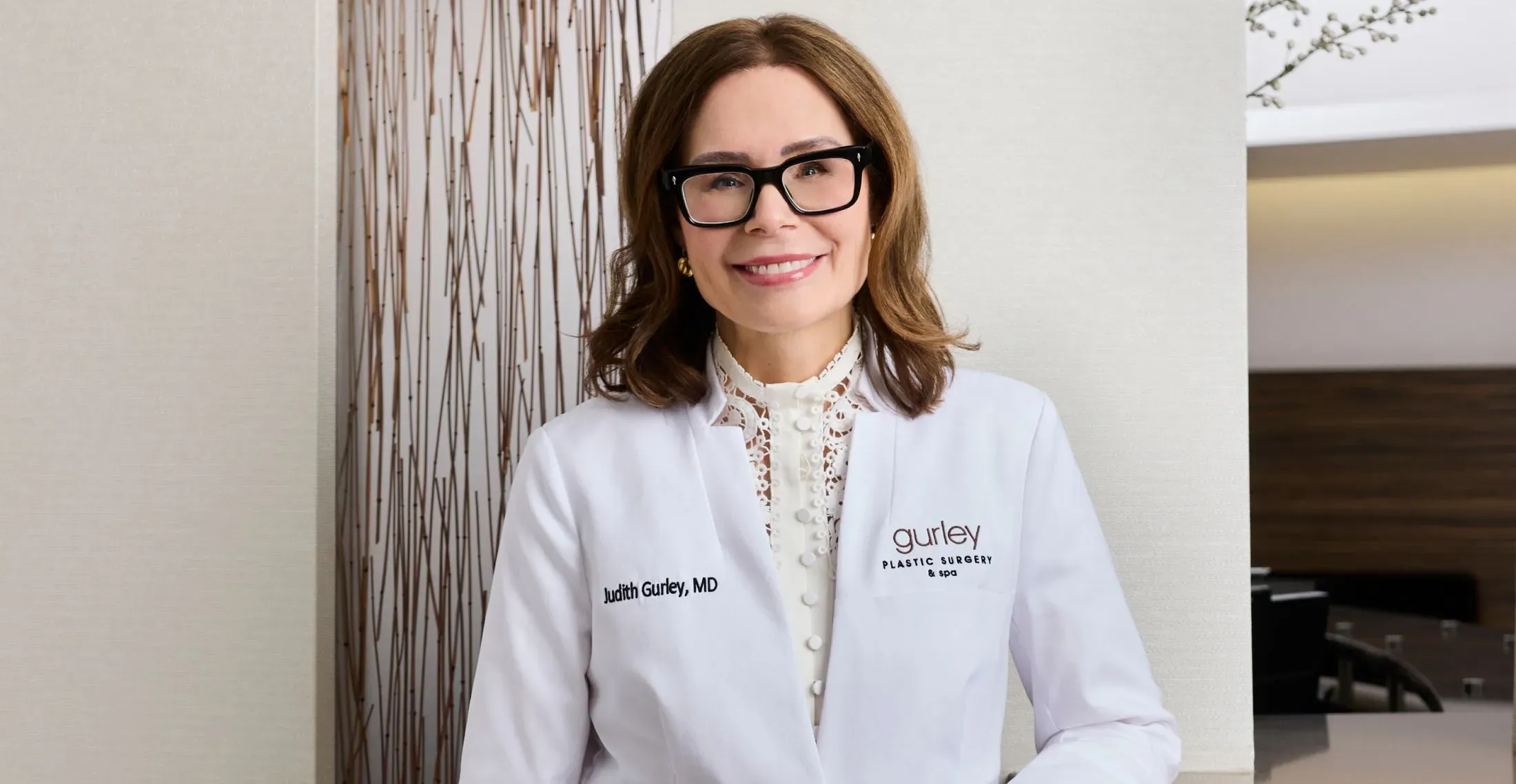




No one will know. Everyone will notice™

Women think their breasts should be identical in size, shape, and position on the chest, but this is rare. Most women have at least some asymmetry between their breasts. It’s thought that over half of women have some degree of asymmetry. And, that estimate could be on the low end of possibility — one recent study showed that 88 out of 100 women undergoing breast augmentation had some natural asymmetries in their breasts before their augmentation procedures.
Minor or major differences in size or shape can be addressed by Dr. Gurley. She can accomplish this through augmentation, a breast lift, and/or breast reduction.
Attention to detail and beauty are Dr. Gurley’s main objective. “Beauty is in the eye of the beholder” rings true for Dr. Gurley’s practice. She feels before and after photographs, which demonstrate a surgeon’s results, should be one of the most important deciding factors on how to choose your surgeon. And, making sure your concept of beauty aligns with your surgeon’s concept of beauty is also crucial.
Many women don’t know this, but their breasts are actually two glands. The average breast weighs from 7 to 10 ounces and is made up of mostly 12-20 lobes that radiate out from the nipple in a pattern similar to bicycle tire spokes.
Your breast size does change every month with your menstrual cycle. Most women feel their breasts are fuller and more sensitive when they’re ovulating. This is true, and it’s due to water retention and additional blood flow. This is the time your breasts are likely to be the same size, or as close as they ever are to the same. They are the most symmetrical on the first day of ovulation and then shrink back to their asymmetry during menstruation.
It could be congenital or acquired.
While there may not be a definite reason why some women have breasts that develop differently, it’s thought that contributing factors could be hormonal changes or trauma. Post-partum or in utero damage to the breast bud may lead to asymmetry.
Other times, underlying fibroids can be the cause of asymmetry. These are non-cancerous growths that can make noticeable differences in size. But, in general, we do not know why two breasts on the same person may be different. The good news is that even minor differences can be addressed surgically. Major differences may require more extensive reconstruction and, with Dr. Gurley’s reconstructive background, this type of correction comes naturally to her.
When should you consider correction of breast asymmetry? It depends upon the patient’s emotional and physical maturity. Most girls, two years after their periods begin, are physically mature enough for surgical correction. This can be at 15, 16 or 17 years and older.
Dr. Gurley meets with patients and parents to come up with a plan that is best for each individual patient.
In addition to asymmetry, large breasts can also be addressed at these young ages if need be.
Dr. Gurley can perform the above-mentioned surgical options to correct breast asymmetry. Depending on the chosen surgical method, there will be some scarring around the areola, or down from the areola to the breast crease.
If you are concerned about your breasts being asymmetrical, come see Dr. Gurley. She can determine the size of each breast and offer her suggestions. Call us for an appointment, (636) 812-4300